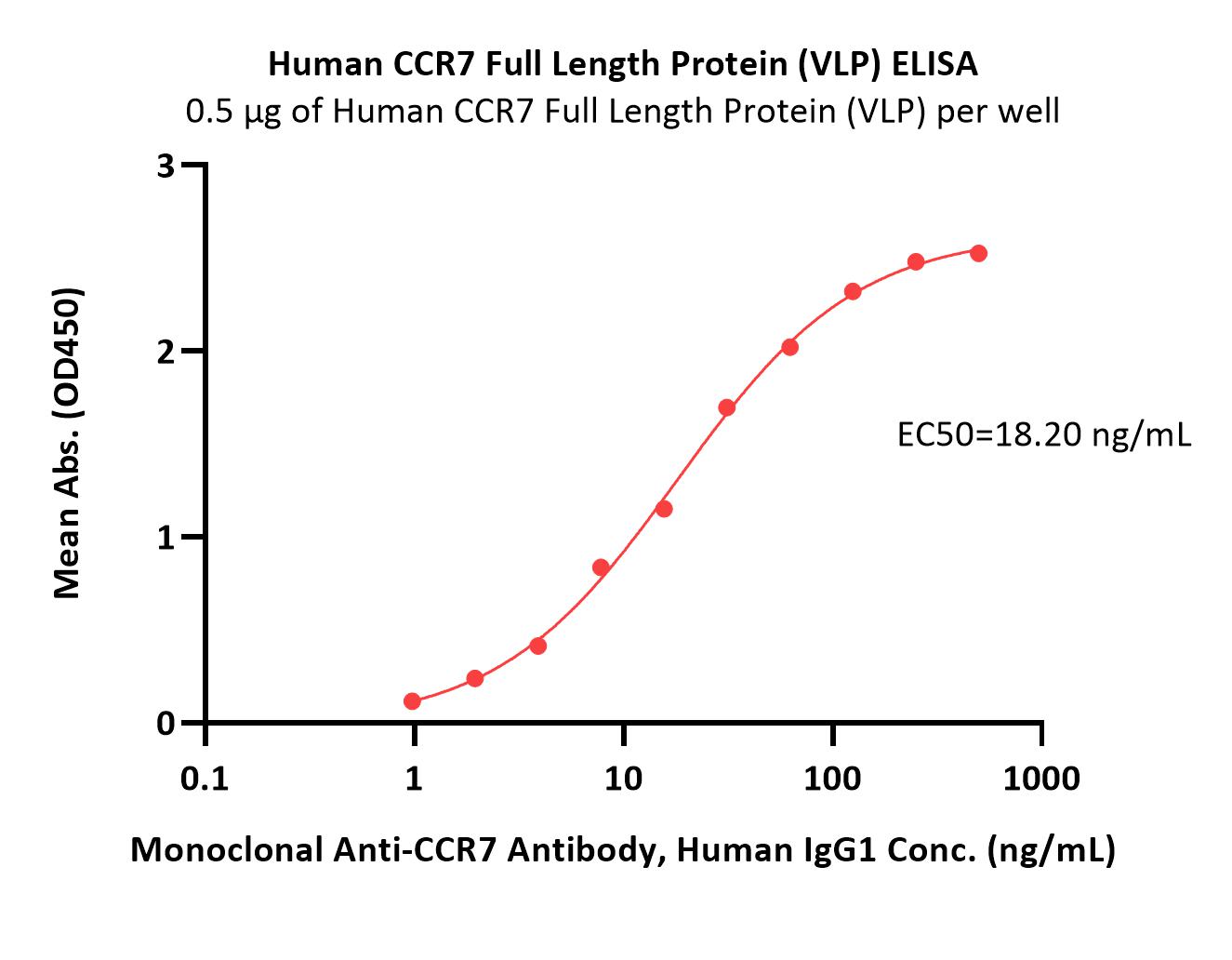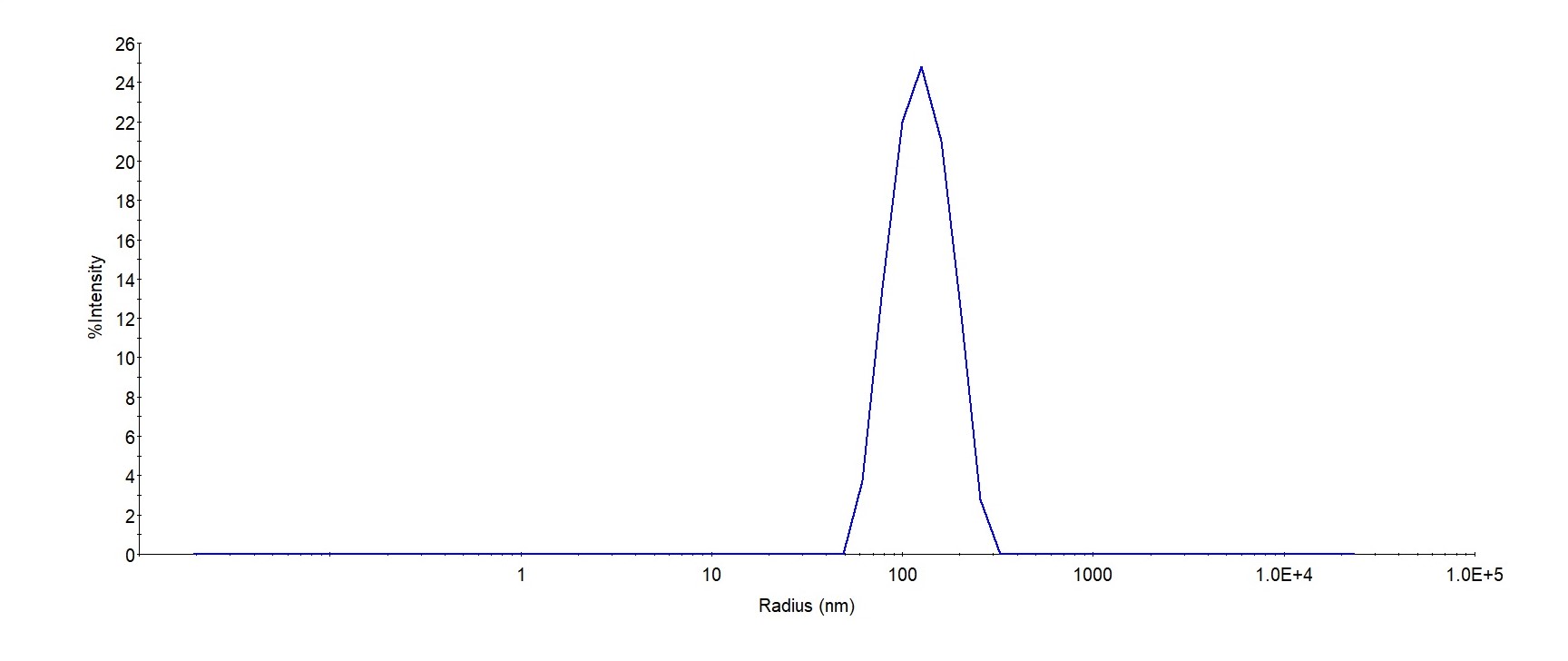分子别名(Synonym)
BLR2, CC-CKR-7, CCR-7, CD197, CDw197, CMKBR7, EBI1
表达区间及表达系统(Source)
Human CCR7 Full Length Protein (VLP) (CC7-H52P3) is expressed from human 293 cells (HEK293). It contains AA Gln 25 - Pro 378 (Accession # P32248).
Predicted N-terminus: Asp
蛋白结构(Molecular Characterization)
Virus-like particles(VLPs) are formed by self-assembly of envelop/capsid proteins from viruses. Membrane Proteins can be constituted in-situ with VLPs produced from HEK293 cell cultures. These VLPs concentrate conformationally intact membrane proteins directly on the cell surface and produce soluble, high-concentration proteins perfect for immunization and antibody screening.

The VLPs provide the display of properly folded membrane proteins in their native cellular membrane in a compact size of 100~300 nm diameter (similar to the size of most viruses) making it optimal targets for dendritic cells in vivo and surface attachment for phage display.
内毒素(Endotoxin)
Less than 1.0 EU per μg by the LAL method.
制剂(Formulation)
The VLPs are highly immunogenic, so the immunization strategy should be optimized (antigen dose, regimen and adjuvant).
Supplied as 0.2 μm filtered solution in PBS, Arginine, pH7.4 with trehalose as protectant.
Contact us for customized product form or formulation.
运输(Shipping)
This product is supplied and shipped with dry ice, please inquire the shipping cost.
存储(Storage)
Please avoid repeated freeze-thaw cycles.
This product is stable after storage at:
- The product MUST be stored at -70°C or lower upon receipt;
- -70°C for 12 months under sterile conditions.
活性(Bioactivity)-ELISA

Immobilized Human CCR7 Full Length Protein (VLP) (Cat. No. CC7-H52P3) at 5 μg/mL (100 μL/well) can bind Monoclonal Anti-CCR7 Antibody, Human IgG1 with a linear range of 1-63 ng/mL (QC tested).
Protocol
均一性(Identity)-DLS

The mean peak Radius of VLP is 105-125 nm with more than 95% intensity as determined by dynamic light scattering (DLS).
背景(Background)
The monoclonal antibody mAb-729 reacts with the human CC chemokine receptor, CCR7. The protein encoded by this gene is a member of the G protein-coupled receptor family. This receptor was identified as a gene induced by the Epstein-Barr virus (EBV),and is thought to be a mediator of EBV effects on B lymphocytes. This receptor is expressed in various lymphoid tissues and activates B and T lymphocytes. It has been shown to control the migration of memory T cells to inflamed tissues, as well as stimulate dendritic cell maturation. The chemokine (C-C motif) ligand 19 (CCL19/ECL) has been reported to be a specific ligand of this receptor. Signals mediated by this receptor regulate T cell homeostasis in lymph nodes, and may also function in the activation and polarization of T cells, and in chronic inflammation pathogenesis.























































 膜杰作
膜杰作 Star Staining
Star Staining











